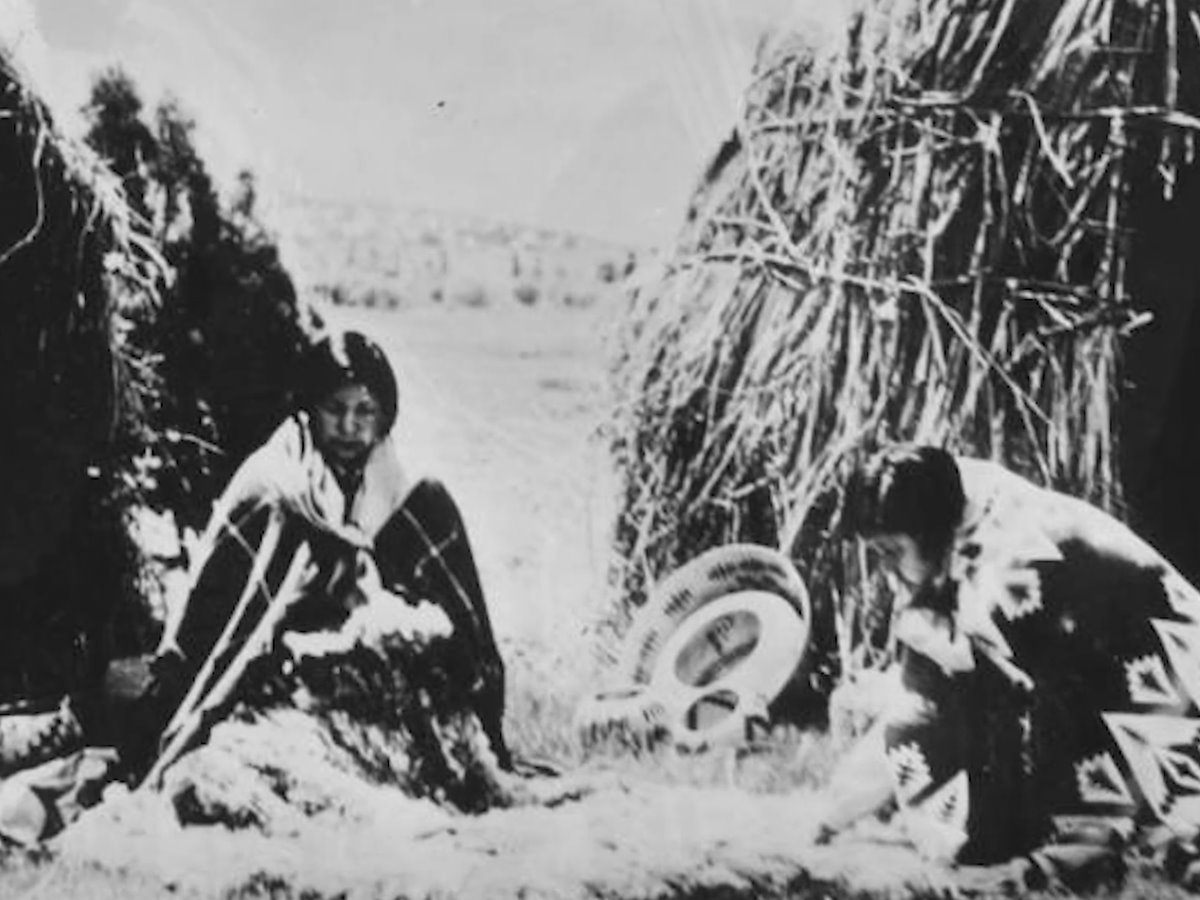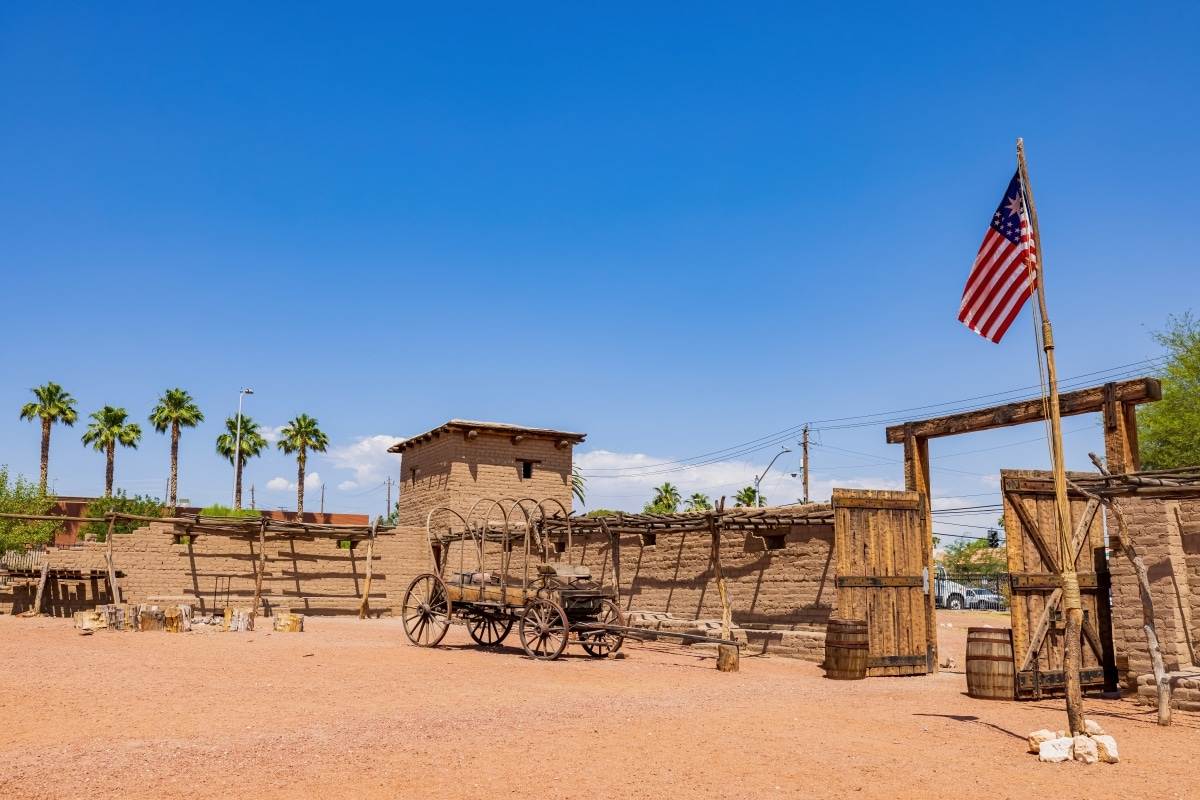Wigwams, Water and Railroads
Water Brought Life. Railroads Brought Progress.
The first settlers of Las Vegas were indigenous North American Indians who chose the area for its water resources. Over time many others chose the Las Vegas Valley for the same reasons.
In the early 1800's the native Paiute tribe lived in this area because it offered a small creek of fresh running water. This tribe harvested the land around the creek to survive. In 1829 a Mexican trader established a route from Santa Fe to Los Angeles which people begin referring to as the Old Spanish Trail. Anyone who has driven old Route 66 between these two cities might have traveled along this same path. The name "Las Vegas" is used as it means "the meadows" in Spanish, referring to this green oasis in the middle of the dry arid desert.

Paiute Tribe Settlement
In 1844 the US Government sends soldier/explorer John Fremont (yes, "that" Fremont) to the Mexican frontier where he creates the first map indicating "Vegas" by name. In that same year James K. Polk was elected President running on a campaign platform that he would annex large swaths of Mexican territories stretching from Louisiana all the way to the Pacific Ocean. In 1845 the US "negotiated" the surrender of modern-day Texas. Then, in 1846 the US Congress allows President Polk to declare war on Mexico to "settle" the remaining disputed borders between the two countries.
In 1848, and as a result of the United States invading Mexico, the Treaty of Guadalupe Hidalgo was reached in which Mexico ceded fifty-five percent of its territory. What is now known as modern-day California, Nevada, Utah, New Mexico and much of Arizona, Colorado, Oklahoma, Kansas and Wyoming all became officially part of the United States.
As this war was being fought the Mormons were busy settling Salt Lake City and by 1851 they had established a route leading to San Bernardino in California. Their eventual goal was to make it to Los Angeles and they needed a safe waypoint where they could rest. The water of the Las Vegas Valley was the perfect spot. They established a fort which has been preserved and still stands today on Las Vegas Boulevard about one mile north of Fremont street.

Preserved "Old Mormon Fort" north of Fremont Street
The Mormons ran into problems with the food supply and also didn't manage their relationship with the Paiute tribes well. They pulled out of the fort after a decade and left it to decay. In 1864 a man named O.D. Gass moved into the abandoned fort and started a ranch in the land around it. He would eventually surrender the ranch to another mane named Archibald Stewart. Archibald is shot dead over a business dispute in 1884 and his wife Helen took over.
Helen Stewart ran the ranch successfully for almost two decades while buying many of the best plots of land along the water supply. in 1902 a man named William Clark was building a railroad through the town and needed a place where his steam locomotives could stop along the route to fill up on water. Clark bought the area around the Mormon fort and about 2,000 acres of other property from Helen Stewart.
On May 15th, 1905 William Clark held a land auction in the area where Circa's "Garage Mahal" stands today. He sold many of the parcels he bought from Helen Stewart, and when the day was over about half his lots were bought and the city of Las Vegas was born. It was officially incorporated six years later, on March 16th 1911.

City of Las Vegas founded May 15th, 1905 via public land auction
What happened in Las Vegas over the century that followed was something nobody could have possibly predicted, a legend which is now one of the greatest stories of American grit, gumption and ingenuity. Read on to hear more!